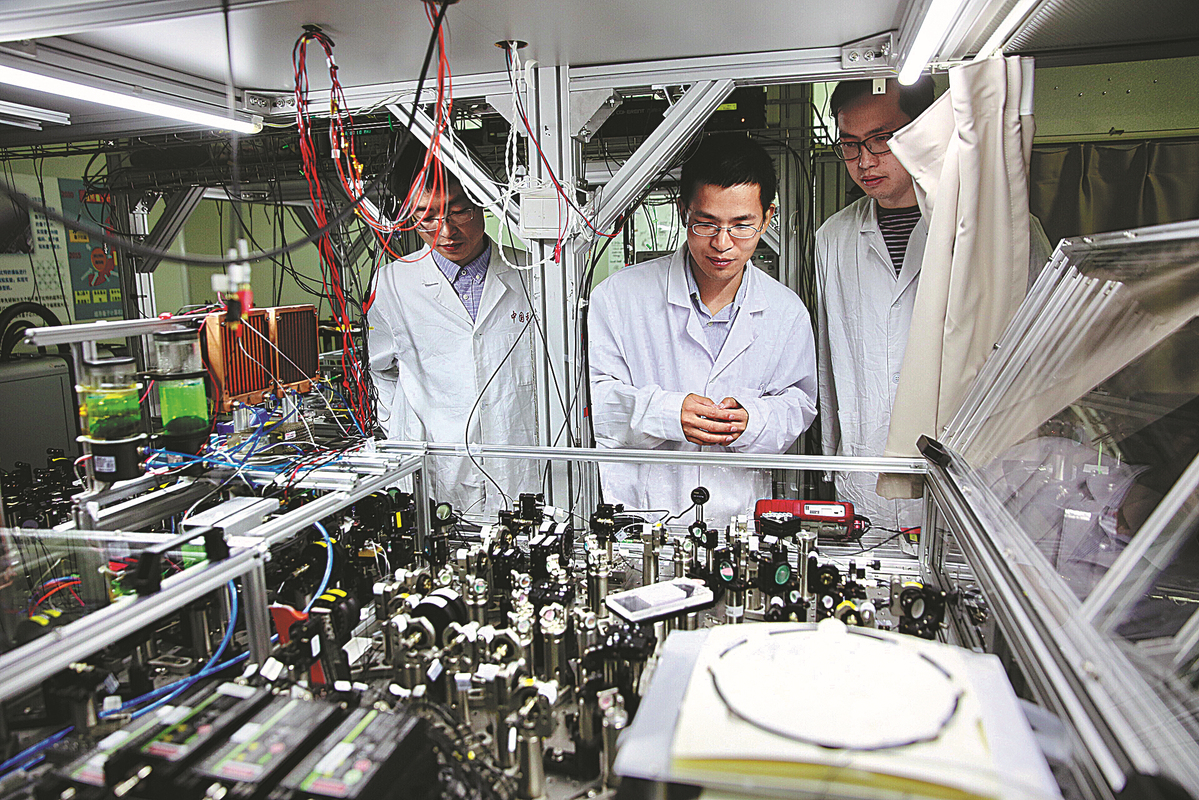Science and technology achievements drive nation's progress


Ability, potential
For Cai Tao, an associate researcher with the Tianjin Institute of Industrial Biotechnology at the Chinese Academy of Sciences, blue is not a color associated with sadness, but with hope and success.
For over six years, his team focused on a single task: how to synthesize starch in a way that is similar to the process in plants, but do it much faster.
Unlocking this insight is key for sustainability on Earth and future space exploration as it theoretically allows scientists to recycle carbon dioxide and turn this common industrial byproduct and greenhouse gas into food.
With the aid of supercomputing and clever bioengineering, Cai streamlined the complex natural starch-making process via photosynthesis into 11 steps, with the final product being starch, whose solution turns blue upon contact with iodine.
"On July 24, 2018, our solution turned light blue for the first time after hundreds of failed experiments. It was a great moment of introspection and awe," he said. "We overcame countless difficulties over the years, and for us that light blue in a tube shone like a bright ray of hope."
Cai's findings were published in the journal Science, and were celebrated by CAS as one of the biggest original breakthroughs in basic sciences last year.
Ye Yujiang, head of the Department of Basic Research at the Ministry of Science and Technology, said such studies are the source of innovation, a measure of a country's research capability and potential, and the foundation for achieving self-reliance and strength in science and technology.
Last year, China led the world in seven out of 11 broad fields in terms of active frontier research, according to the report 2021 Research Fronts, published by the Institutes of Science at CAS and Clarivate, a global analytics company.
The report identified 171 frontier research topics, from physics to clinical medicine. The list, compiled by analyzing data from highly influential and frequently cited papers published from 2015 to last year, is used to help scientists and governments identify popular and emerging scientific fields.
The seven categories of frontier research in which China excelled were: agricultural, plant and animal sciences; ecological and environmental sciences; clinical medicine; chemistry and materials science; mathematics; information science; and economics, psychology and other social sciences.
China ranked second in geosciences, biological sciences and physics, and eighth in astronomy and astrophysics, according to the report.
It added that in terms of a country's overall performance across all 11 areas, the United States topped the list, followed by China, but the gap between the two countries has been closing fast in recent years.
Pan Jiaofeng, head of the institutes, said China has maintained its advantages in chemistry and materials science, and has seen major improvements in biology and clinical medicine thanks to the major contribution the nation's scientists have made in tackling the COVID-19 pandemic.
























